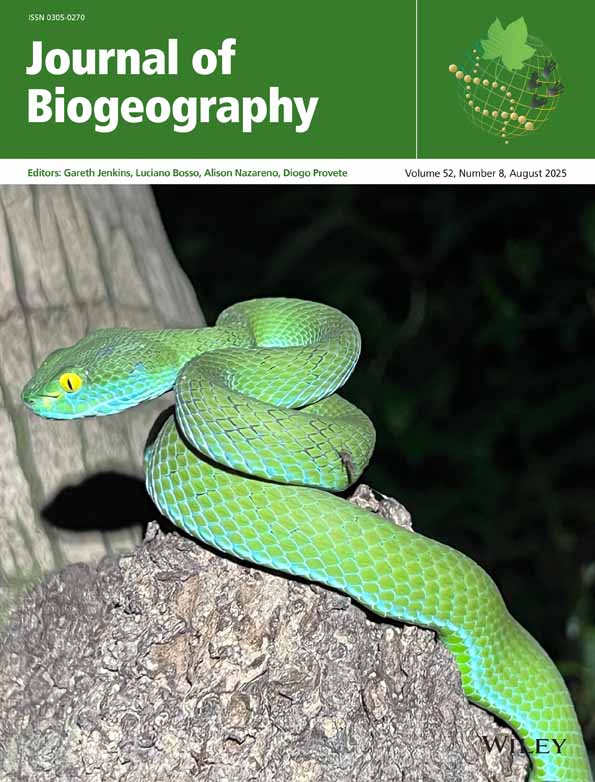Climatic influences on fire regimes along a rain forest-to-xeric woodland gradient in northern Patagonia, Argentina
Abstract
ABSTRACT. Influences of annual climatic variation on fire occurrence were examined along a rainfall gradient from temperate rainforest to xeric woodlands in northern Patagonia, Argentina. Fire chronologies were derived from fire scars on trees and related to tree-ring proxy records of climate over the period 1820–1974. Similarly, fire records of four Patagonian national parks for the period 1940–1988 were compared to instrumental weather data. Finally, the influences of broad-scale synoptic weather patterns on fire occurrence in northern Patagonia were explored.
Fire in Nothofagus rainforests is highly dependent on drought during the spring and summer of the same year in which fires occur and is less strongly favoured by drought during the spring of the previous year. The occurrence of fire in dry vegetation types near the steppe ecotone is less dependent on drought because even during years of normal weather fuels are thoroughly desiccated during the dry summer. In xeric Austrocedrus woodlands, fire occurrence and spread are promoted by droughts during the fire season and also appear to be favoured by above-average moisture conditions during the preceding 1 to 2 growing seasons which enhances fuel production. Thus, in the xeric woodlands fire is not simply dependent on drought but is favoured by greater climatic variability over time scales of several years.
Fire activity in northern Patagonia is greatly influenced by the intensity and latitudinal position of the subtropical high pressure cell of the southeast Pacific. Greater fire activity is associated with a more intense and more southerly located high pressure cell which blocks the influx of Pacific moisture into the continent. Although long-term changes in fire occurrence along the rainforest-to-xeric woodland gradient have been greatly influenced by human activities, annual variation in fire frequency and extent is also strongly influenced by annual climatic variation.




